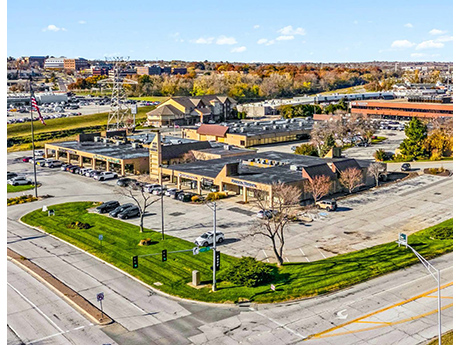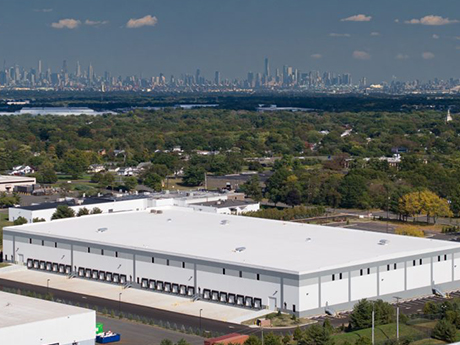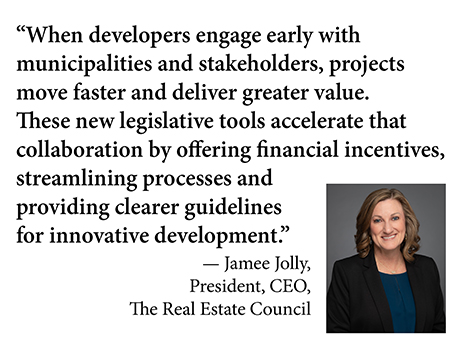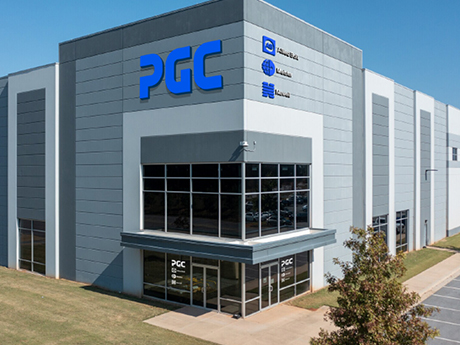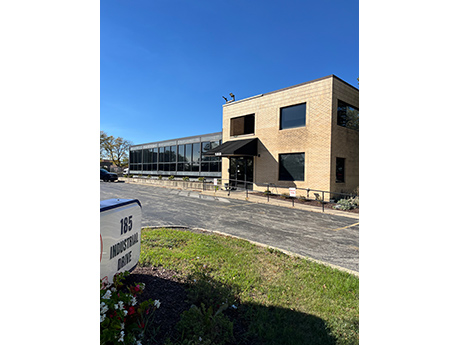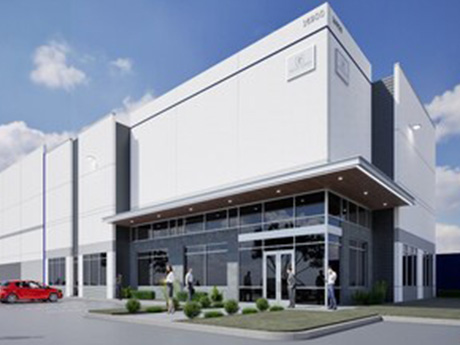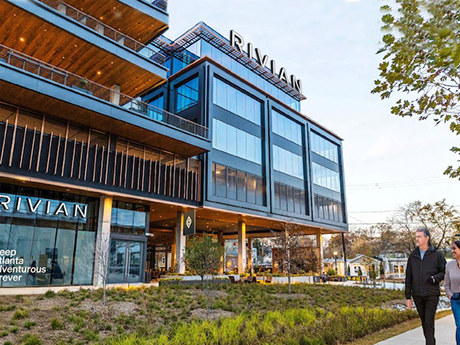By Sam Rolfe, The Lerner Company It seems Omaha’s retail market shows no signs of slowing down from a position of strength, which received a tangible boost when the metro-area population hit the magic 1 million mark. It’s funny that this population hurdle opens the eyes of retailers so much more than 970,000 would, but there’s no doubt that it does, and the market has reacted accordingly, with year-over-year asking rents up 5.4 percent. The seemingly rapid growth and development have not vastly affected the city’s historically strong fundamentals and high occupancy rates however, with the vacancy rate in the metro at 4.4 percent. This low vacancy is partially a byproduct of the historically low supply that has plagued the market in recent years. Over the last decade, we have seen vast westward growth and somewhat stagnant activity in the urban core and central region. Although the westward march continues, it is now coupled with large amounts of urban development, making the city’s retail market strong within eastern submarkets. The old adage “retail follows rooftops” has held true throughout this growth cycle, as retail developments follow the suburban growth of both homes and apartments. One example of this is at …
Market Reports
By Taylor Williams What do the phrases “owner-occupier,” “small-bay” and “mid-range WALT” have in common? They could potentially be obscure references to real-life inspirations behind songs on the new Taylor Swift album. But just in case that’s not the case, these terms also represent types of industrial investment plays that have become increasingly favorable among owners and prospective buyers in Northeast markets. The rising popularity of these deals attests to shifts in the broader landscape, i.e. — large-scale e-commerce and logistics facilities have been either overbuilt or priced to perfection in many areas. But the past 12 months have seen industrial deal volume in major Northeast markets regain traction. Although some — if not most — of that activity is tied to interest rates and geopolitics, the emergence of different deal types is nonetheless a positive indicator because it speaks to the creative approach that the investment community has taken in its return to the market. Unlike a few years ago, industrial real estate today is not a mindless beneficiary of both institutional and private debt and equity — a bottomless pit of capital flows. Tenants are no longer forced to write quasi-blank checks to owners just to secure crucial …
— By Ben Galles of CBRE — The Reno multifamily market started 2025 with a large supply of new Class A units that was delivered in the fourth quarter of last year. Despite some market challenges, leasing activity of the new supply has gone well, given the limited construction pipeline. There are currently fewer than 700 market-rate units under construction, with very few projects moving forward and starting construction. The constrained development pipeline will likely lead to a significant decrease in vacancy in the second half of 2026 and beyond. This should also start to push rental rates higher, which have been static or slightly down for most of the year, as many owners have offered rent concessions to lock in new tenants. While future market fundamentals are promising, many buyers remained on the sidelines because most deals have been presented at negative leverage. The average price per unit in 2025 (year to date) is down about 22 percent, while the price per square foot is down about 16 percent (year to date) from the previous year. This is due to a few things. First, there was an increase in the number of Class B and C assets that traded …
By Jamee Jolly, president and CEO, The Real Estate Council With record population growth and a $2.7 trillion economy, Texas faces mounting pressure to expand its housing supply and affordability. New legislation from the 89th legislative session gives developers, cities and investors new tools to build sustainable communities through stronger collaboration between the public and private sectors. From established patterns of corporate relocations, job creation and direct foreign investment to fostering emerging industries like renewable energy, semiconductor manufacturing, aerospace and financial services, Texas has a long history of economic strength, industry diversification and innovation. That track record makes it one of the nation’s premier destinations for both businesses and residents. Last year, according to U.S. Census Bureau data, Texas led the nation in population growth for the 14th consecutive year, adding more than 560,000 people to reach over 31 million statewide. In North Texas, the population in Dallas-Fort Worth (DFW) alone is expected to grow from 8 million to 12 million residents by 2050. While this growth fuels one of the world’s largest economies, it has also created a shortage of more than 320,000 homes and a rising challenge of housing affordability statewide, particularly at the entry-level price point, where …
After several years of breakneck growth, Atlanta’s industrial sector has clearly shifted into a mid-cycle recalibration. Vacancy has climbed to 8.4 percent, well above the 10-year average of 5.8 percent, as a record wave of big-box deliveries collides with softer demand. Twelve-month net absorption turned negative for the first time since 2011, dropping 453,000 square feet despite 14.9 million square feet of new deliveries over the past year. Developers and tenants alike are adjusting, but the region’s logistics advantages and diverse economy keep long-term fundamentals intact. Supply and demand The pandemic-era surge of speculative construction has decisively slowed. Construction starts have fallen roughly 70 percent from the five-year average, leaving 16.3 million square feet under construction, with just 25 percent available — down from 60 percent a year ago. Most large projects are now data centers, such as a 1.5 million-square-foot QTS facility in Fayette/Coweta County and a 1.2 million-square-foot Microsoft data center near Hartsfield-Jackson Atlanta International Airport. Vacancy is rising fastest in submarkets that saw heavy new supply. Kennesaw/Acworth, for example, has added over 9 million square feet since 2023 and now posts about 13 percent availability for buildings sized 200,000 square feet and larger. Sublease availability has grown …
By Marc Hale, DarwinPW Realty/CORFAC International The Chicagoland industrial market continues to stand out as one of the most important in the country. Its location at the center of the U.S. transportation network gives companies the ability to reach nearly one-third of the nation’s population within a single day’s drive. Six Class I railroads, an abundance of intermodal facilities and seven major interstate highways all converge here, making it one of the most efficient distribution platforms in North America. Chicago O’Hare International Airport also ranks among the top cargo airports in the world, adding critical global connectivity. These advantages are reinforced by a large and diverse labor pool, which has long supported the region’s position as a major hub for manufacturers, distributors and logistics providers. The area’s role as a manufacturing hub is further reinforced by its proximity to major steel mills and primary metal production facilities, the depth of its skilled workforce and plentiful access to water from Lake Michigan, which has long supported heavy industry and advanced manufacturing across the region. The market’s vacancy rate has been trending higher, moving from 5.2 percent in the third quarter of 2024 to 5.9 percent in the third quarter of 2025. …
— By Sam Meredith of Colliers — After a slow and uncertain start to 2025, the retail market in Reno and Sparks is finally finding its stride. The first half of the year saw many tenants hit pause on leasing decisions as economic jitters made retailers cautious. By the third quarter, however, the mood had shifted. Leasing activity picked up noticeably, and tenants are now back in the market, actively looking for space. That momentum is expected to carry through the fourth quarter and into 2026, with healthy absorption on the horizon. This turnaround is backed by solid market indicators. Net absorption turned positive in the second quarter, while asking rents rose quarter over quarter. Vacancies nudged upward due to big-box closures, including three Big Lots and a Joann store early in the year, but the overall retail vacancy still sits at a manageable 5.4 percent. In fact, several submarkets, including North Valleys, Northwest Reno, South Reno and Southwest Reno, are reporting vacancy rates below 2 percent, showing strong demand in key areas. Retailers are clearly taking notice. Trader Joe’s, which once considered Northern Nevada a one-store market, has now opened two additional locations in Spanish Springs and South Reno. …
Once upon a time, not so long ago, an industrial developer in Texas could pick an appropriately zoned spot on the map, throw up four walls and a roof, slap a few utilities in place and reasonably expect multiple tenants to quickly reach out and express a willingness to pay healthy rent for that space. That’s a colorful and simplified view of the pinnacle of the post-COVID Texas industrial market, but it’s not a farcical take. Between roughly early 2021 and mid-2023, phrases like “record-breaking,” “gangbusters” and “never seen anything like it,” were routinely used by brokers and owners alike to describe the state of industrial tenant demand. Combined with cheap debt and available equity, the ferocious need for warehouse, distribution and manufacturing space sparked absorption of older buildings and fresh capitalizations of new projects across all major markets. Tenants needed space yesterday, and supply chain disruptions — for developers and tenants — were simply a cost of doing business. And business was very, very good. Business is still good today. But the development landscape has undoubtedly shifted while the capital markets that govern said landscape have invariably cooled. New development, particularly in terms of equity, is significantly harder to …
Atlanta’s commercial office market is at a pivotal moment, caught between signs of stabilization and the lingering effects of a post-pandemic reset. Vacancy remains elevated, absorption is improving and tenant preferences continue to evolve — but fundamentals are beginning to shift as the market adjusts to the new workplace. Signs of a bottom? Hybrid work models, space optimization strategies and cautious expansions have elevated metro Atlanta’s office vacancy rates. Direct vacancy rates surpassed 24 percent for the first time and are hovering near all-time highs. Meanwhile, sublease availabilities have declined over 25 percent from their peak in 2023, and quality space remains difficult to find. The slowing pace of vacancy increases suggests the market may be nearing a turning point after recording negative annual absorption in four of the past five years. Net absorption, a key indicator for overall office sector health, totals negative 438,000 square feet, according to Colliers’ second-quarter 2025 report. While still in the red, this marks a significant improvement over previous years. Recent leasing activity suggests even more positive movement in the second half of the year, indicating that tenant departures are tapering and space givebacks are moderating. Leasing: quality vs. quantity Despite economic headwinds, leasing …
By Nicole McAleese, Urban Innovations As autumn arrives, Chicago’s commercial real estate market continues to evolve in response to changing workplace strategies and a growing return-to-office (RTO) movement. With major employers tightening in-office attendance policies, both landlords and tenants are adapting to new demands around space, flexibility and location. Shift in tenant behavior Over the past year, Chicago has seen a noticeable shift in how companies are approaching their office needs. Where many tenants once sought short-term lease extensions or downsized footprints during the height of hybrid experimentation, 2025 has brought renewed interest in long-term planning and, in some cases, expansion. Several high-profile lease transactions underscore this trend. Stripe recently doubled its Chicago office space to 89,000 square feet, while law firm Arnold & Porter relocated from the Loop to a new 40,000-square-foot lease, according to Crain’s Chicago Business. While some firms continue to downsize or consolidate, there’s a clear cohort of companies reinvesting in physical office environments that support collaboration, talent attraction and cultural cohesion. These trends mirror national patterns. According to CRE Daily, a growing number of U.S. employers are enforcing stricter in-office attendance, accelerating the shift away from a purely remote or hybrid-first mindset. The Archie RTO …


